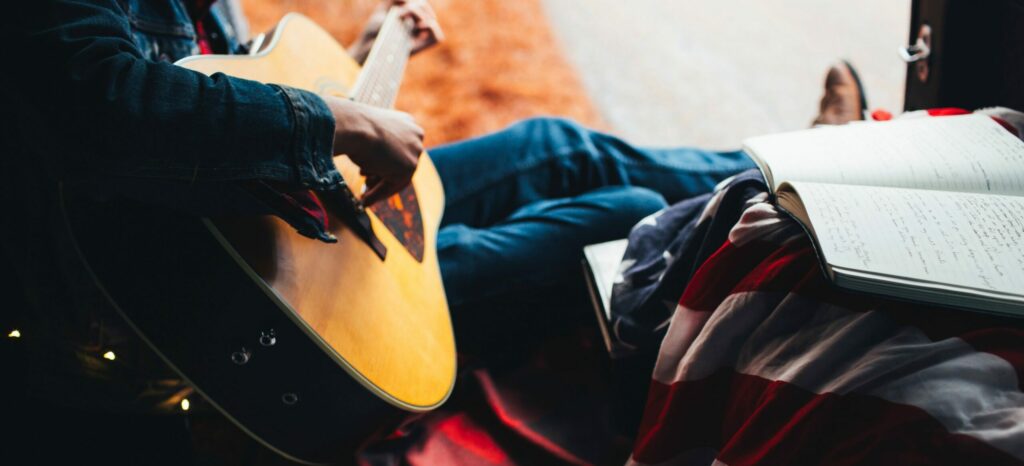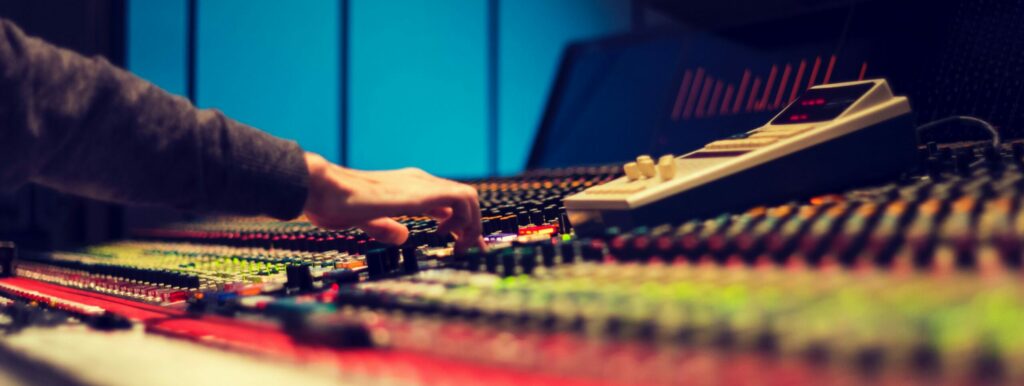Of all the tools in your DAW’s arsenal, looping might be one of the most underrated. This simple technique can help you write, record, and edit a mix with ease. Loop tracks are also great for live performance and practice. Here, we’ll go over how to create loop tracks in Logic Pro X and how to use looping to your advantage.
How to Create Loop Tracks
There are a few different ways to approach looping in your DAW. If you want to loop a region of a song for continuous playback, the process is simple. In Logic Pro, for instance, find the desired region, then click and drag up above where the beat markers are. This region will now be highlighted, meaning it will repeat once you hit play and continue until you stop it. This region can be moved, extended, or shortened.
This method is especially great for editing, recording, and writing. However, creating an actual loop track is slightly different. The goal here is to repeat a section, not just hear a section played back. It’s sort of like copying and pasting but faster and more accurate. Creating a loop track in Logic is just as simple as looping a section. Just select the region and check «Loop» in the box in the top left corner under «Region Inspector.»

This will automatically repeat the selected region from the end of the track until either the end of the project or until it hits another region within the same track. For an accurate loop that’s right on tempo, some trimming will need to be done to ensure the region is precisely the correct length of time.
The Several Uses of Looping
Once again, looping is beneficial in many ways. Let’s take a look at a handful of them and explore their applications.
Loop Tracks are Great for Practicing
Whether you’re looping a section or listening back to a track of looped sections, you can use loops as practice tools. As long as the section was recorded to a metronome, playing alongside it or riffing off of it is a good way to practice your timing and improvisation. Having a click track play underneath never hurts either.
Loop Tracks Can Help You Write
Most of us know how difficult writing a song can be at times. It’s not easy to envision an entire song at once with all its elements. But suppose you just laid down an idea for a beat or a bass section. Whatever the case, you can loop this part and have it play as you work on writing additional parts. Rather than fumbling around with manual controls and a guitar in hand, you can let the DAW automatically loop a section while you get new ideas flowing.

Loop Tracks Make Recording Easier
Once you have a great new idea to add to your song, you’ll want to record it. Fortunately, looping even makes recording easier. The technique known as «comping» (short for «compilation») works hand in hand with looping. When you record with the loop feature engaged, the DAW will store multiple takes during the same region. In other words, you can try a few different takes of the same section without needing to manually start and stop the recording process. Once you’re done recording, you can choose which take you like best or combine the best parts of each take by highlighting them and clicking «flatten.»
Using Loops to Edit and Mix
Mixing and editing are also easier with the aid of looping. If there’s a particular part of your song you want to focus on, simply loop it. By doing so, you can listen to the section repeatedly while you edit and mix. This makes mixing with EQ, volume, and panning much easier since you can really hear the changes you make in real time without having to deal with manual controls for playback.

If there are specific parts of your loop track you wish to edit after you’ve already looped it, such as length, you can create aliases or clones in order to apply the change to all loops. This can be done by selecting the primary region, clicking «Edit,» «Convert,» then «Loops to Aliases.» Now this change applies to all the loops.
Using Loop Tracks for Live Performance
Loop tracks are even useful beyond the realms of writing, recording, and mixing. Some artists, out of necessity or creativity, use loop tracks for their live performances. Kimbra and Reggie Watts are two recent popular examples of artists who utilize looping to the fullest extent during their shows and radio appearances.
While it might sound like a bit of a cheat, using looping in a live setting takes a lot of skill, practice, and equipment to get right. It can be used in simpler ways as well, like using a loop pedal for guitar. But for full-sounding performances with sampling, harmonies, layers, modulation, and more, live looping is an art. To pull this off, you’ll need knowledge of the gear you use as well as impeccable timing and skill. If your timing is off, it will reflect in the loop and gradually make each added piece sloppier. And if you’re using a loop station to loop your vocal performance, make sure you’re always in tune. Otherwise, you pigeonhole yourself into a continuously off-putting performance.

Additionally, if you’re not an expert with your equipment, it won’t take long for you to make a mistake. A two-track loop station like a Boss RC-30 is a good piece of kit to start with. Make sure you understand the ins and outs of it before going deeper.
Conclusion
There are several ways and reasons to use looping or create loop tracks. Whether you’re practicing, writing, recording, mixing, or performing, it’s useful to know how to use looping to your advantage. It’s yet another example of how modern technology can make us better, boost our creativity, and make our lives easier.
Sobre el autor

Ethan Keeley
Escritor, locutor, músico y editor de audioEthan Keeley es músico, locutor y escritor de Rochester, Nueva York. Cuando no está de gira con su grupo Unwill, trabaja en nuevas canciones e historias.
Deja un comentario
Inicia sesión para comentar


